How Speed Modes Enhance Learning and Decision-Making
Блог: нет блога
Содержимое статьи:
In an era where information overload is commonplace, understanding how different processing speeds influence our learning and decision-making processes is crucial. Speed modes—adjustable settings that alter the pace at which information is presented or processed—serve as powerful tools to optimize cognitive performance. These modes are not only relevant in digital learning environments but also mirror real-world situations where rapid or deliberate decisions are essential.
This article explores the theoretical foundations of speed modes, their practical applications, and how they can be utilized to improve educational outcomes and decision quality. By examining examples from adaptive learning systems and decision-making scenarios, we aim to provide actionable insights for both learners and educators.
2. Theoretical Foundations of Speed and Cognitive Performance
3. Speed Modes as a Tool for Enhancing Learning Outcomes
4. Decision-Making Under Different Speed Conditions
5. Practical Applications of Speed Modes in Educational Contexts
6. Case Study Illustration: Game Mechanics as an Example
7. Cognitive Biases and Speed
8. Technological and Ethical Considerations
9. Strategies for Educators and Learners
10. Conclusion
1. Introduction to Speed Modes in Learning and Decision-Making
Speed modes refer to adjustable settings that influence the rate at which information is presented or processed during learning and decision-making tasks. These modes are highly relevant in cognitive sciences, as they reflect how humans naturally fluctuate between rapid and deliberate thought processes. For example, when reading a complex text, a learner might slow down to ensure comprehension, while skimming through familiar content might involve faster processing.
Varying speeds can significantly impact how well we understand material and how accurately we judge situations. Fast modes often promote quick reactions and intuition, whereas slower modes foster reflection and critical analysis. Understanding how to toggle between these speeds enhances cognitive flexibility and can lead to better learning outcomes and more sound decisions.
This article aims to explore these concepts in depth, highlighting their theoretical underpinnings, practical applications, and implications for both education and real-world decision-making.
2. Theoretical Foundations of Speed and Cognitive Performance
a. Cognitive Load Theory and Processing Speed
Cognitive Load Theory (CLT) posits that our working memory has limited capacity. When information is presented too quickly, it can overload this system, reducing comprehension. Conversely, slowing down information flow allows learners to process complex ideas more thoroughly, minimizing extraneous cognitive load. Adaptive learning platforms often incorporate speed controls to balance presentation pace with individual cognitive capacity, enhancing retention.
b. Decision-Making Models: Fast vs. Slow Thinking
Daniel Kahneman’s famous model distinguishes between System 1 (fast, intuitive) and System 2 (slow, deliberate) thinking. Speed modes directly influence which system dominates. Fast modes engage System 1, facilitating quick judgments but risking errors, while slow modes activate System 2, promoting analytical reasoning. Effective decision-making often requires a strategic shift between these modes, depending on the context.
c. Reaction Time and Learning Efficiency
Reaction time—the interval between stimulus and response—is a key metric in assessing learning efficiency. Short reaction times may indicate automaticity or superficial processing, whereas longer responses suggest deeper engagement. Training often aims to optimize reaction time: speeding up responses for routine tasks, while slowing down to analyze complex problems, thereby improving overall learning outcomes.
3. Speed Modes as a Tool for Enhancing Learning Outcomes
a. Tailoring Educational Experiences
Educational technologies increasingly incorporate adjustable speed settings to personalize learning. For example, language learning apps allow users to slow down speech to catch nuances or accelerate playback for review. This flexibility helps accommodate individual differences in processing speed and learning style, leading to more effective mastery of material.
b. Examples of Adaptive Learning Systems
Systems like Duolingo and Khan Academy employ real-time speed adjustments, enabling learners to control content flow. These platforms analyze user performance to suggest optimal speeds, ensuring learners neither feel overwhelmed nor bored. Such adaptive mechanisms exemplify how controlling processing speed enhances engagement and retention.
c. Benefits of Controlled Speed Variation
Controlled variation in speed can improve skill acquisition by allowing learners to practice at their optimal pace. Slower speeds foster understanding, while faster modes build fluency. For instance, in language pronunciation training, alternating between speeds helps learners develop both comprehension and speaking confidence.
4. Decision-Making Under Different Speed Conditions
a. Accuracy and Confidence
Research indicates that rapid decisions can boost confidence but may reduce accuracy, especially under complex conditions. Conversely, taking more time generally increases correctness but may diminish confidence if overthought. Balancing speed with thoroughness is key—this is where training to adapt pace becomes valuable.
b. Risks and Benefits of Rapid Judgments
Hasty decisions can lead to errors, yet in high-stakes scenarios like emergency response, quick judgments are essential. Conversely, in contexts requiring precision, slowing down minimizes mistakes. Recognizing when to shift between these modes is a skill cultivated through deliberate practice and awareness.
c. Case Study: High-Stakes Decision-Making
Consider air traffic controllers who must rapidly interpret data while maintaining accuracy. They often train with simulations that adjust speed, teaching them to recognize cues swiftly without sacrificing safety. Such examples underscore the importance of flexible speed modes in mastering complex decisions.
5. Practical Applications of Speed Modes in Educational Contexts
a. Incorporating Speed Adjustments in E-Learning
Modern e-learning platforms often allow learners to modify the pace of video lectures, quizzes, and interactive modules. This feature supports personalized learning, enabling users to revisit challenging parts or accelerate through familiar content. For instance, some systems provide real-time feedback on how speed changes affect comprehension, guiding learners to find their optimal pace.
b. Strategies for Optimizing Decision-Making Pace
Learners can develop strategies such as setting time limits for certain tasks or consciously pausing to reflect before responding. Techniques like mindfulness and metacognition help individuals recognize when to speed up or slow down, fostering more deliberate and effective decision-making.
c. Role of Feedback and Reflection
Providing feedback on decision speed and accuracy encourages learners to adjust their pacing. Reflection exercises, such as reviewing decisions after the fact, help identify optimal speeds for various tasks and reinforce adaptive pacing habits.
6. Case Study Illustration: Game Mechanics as an Example
a. Overview of Game Mechanics and Rules
Modern games such as Aviamasters illustrate how speed modes influence decision-making under dynamic conditions. In this game, mechanics like malfunctions, landings, and multipliers create a complex environment where players must adapt their strategies in real-time, often under time constraints. These mechanics exemplify how varying processing speeds can impact outcomes.
b. Influence of Speed Modes on Gameplay Decisions
Players adjusting their decision pace may choose to speed up to maximize points during safe conditions or slow down to avoid malfunctions. This mirrors real-world scenarios where rapid judgments can either lead to success or costly errors. The game demonstrates the importance of strategic speed management, akin to balancing intuition and analysis in real decision contexts. For more insights into adaptive gameplay strategies, consider exploring mehr zur RTP.
c. Lessons Learned
The dynamic environment of Aviamasters underscores that mastering speed adaptation is essential for success. Applying these principles outside gaming—such as in emergency response or strategic planning—can enhance decision quality. The game serves as a modern illustration of timeless cognitive principles: adjusting processing speed based on context improves outcomes.
7. Non-Obvious Perspectives: Cognitive Biases and Speed
a. Mitigating or Exacerbating Biases
Speed modes can influence the prevalence of cognitive biases such as anchoring or confirmation bias. Fast processing may lead to reliance on heuristics, increasing error rates, whereas slowing down allows for more deliberate evaluation, reducing biases. For example, in financial decision-making, adjusting speed can help investors avoid impulsive trades driven by emotional biases.
b. Attention and Error Rates
Attention spans are closely tied to processing speed. When individuals operate at excessive speeds, attention can lapse, leading to mistakes. Conversely, deliberate pacing enhances focus, decreasing error rates. Designing interventions that encourage learners to recognize when to slow down can improve judgment quality.
c. Designing Interventions
Strategies such as real-time alerts or adaptive feedback can guide users to adjust their speed, helping mitigate biases. For instance, prompting a pause during critical decisions can foster reflection and reduce impulsivity.
8. Technological and Ethical Considerations in Speed Mode Deployment
a. Fairness and Transparency
Adaptive speed settings must be transparent and fair, ensuring all users have equal opportunity to benefit. Biases in algorithms or unequal access can lead to disparities, emphasizing the need for ethical design and user awareness.
b. Ethical Implications
Manipulating processing speeds raises questions about autonomy and informed consent. Ethical deployment requires clear communication about how speed adjustments influence learning or decision processes, safeguarding user rights.
c. Future Trends
Integration of AI with personalized speed controls promises more sophisticated adaptation, but also necessitates careful ethical oversight. Ongoing research explores how such technologies can support, rather than manipulate, cognitive performance.
9. Strategies for Educators and Learners to Harness Speed Modes Effectively
a. Developing Pacing Skills
Training programs that include metacognitive exercises—such as self-monitoring and reflection—help learners recognize their optimal speeds. Practice in various scenarios enhances flexibility, enabling better adaptation to task demands.
b. Recognizing Individual Differences
Not all learners process information at the same speed. Personalized assessments can identify each individual’s optimal pace, leading to tailored strategies that maximize learning efficiency.
c. Combining Strategies
Integrating speed modes with other learning approaches—such as spaced repetition, active recall, and feedback—creates a comprehensive framework for effective education. For example, adjusting speed during practice sessions can reinforce skills while maintaining engagement.
10. Conclusion: Synthesizing Insights on Speed Modes for Enhanced Learning and Decision-Making
«Balancing speed, accuracy, and depth is essential for mastering complex skills and making sound decisions. Speed modes offer a dynamic way to tailor this balance to individual needs and situational demands.»
In summary, understanding and strategically employing speed modes can significantly enhance both learning outcomes and decision-making quality. By aligning processing speeds with task complexity and individual differences, learners and educators can foster more effective cognitive engagement


 Забрать подарок
Забрать подарок
